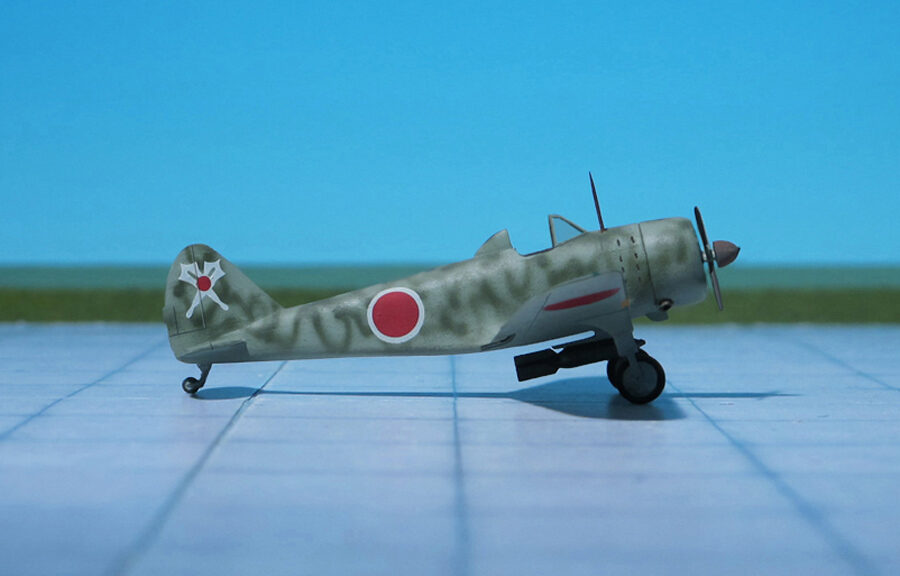TYPE: Trainer, Suicide aircraft
ACCOMMODATION: Pilot only
POWER PLANT: One Hitachi 22 (Ha-23) radial engine, rated at 510 hp
PERFORMANCE: 211 mph
COMMENT: The production of the Army Type 2 Advanced Trainer Ki-79 (Allied code Nate) at the Mansyu plant in Manchuria, occupied by the Japanese, began on January 19, 1943 with the production under license by Nakajima of two variants at once: the Ki-79a single-seat trainer and the Ki-79b two-seat trainer. Both versions had an all-metal semi-monocoque design with low load-bearing surfaces and non-retractable landing gear, exactly the same as that of the Nakajima Ki-27 fighter, since the airframe design was almost completely transferred to the new aircraft. The only significant difference in the trainer was the open cockpit. Since the Hitachi engine was somewhat lighter than its predecessor, the Nakajima Ki-27, despite its almost identical diameter, had to be moved forward a little to maintain the same alignment of the aircraft. Because of this, the length of the serial Ki-79 increased by 0.32 m compared to the length of the three prototypes, where the engine was not moved and the dimensions remained the same as that of the Ki-27. Two-bladed wooden propeller with a diameter of 2.50 m or three-blade wooden propeller with variable pitch were provided. The Mansu Ki-79 trainer was a cantilever monoplane with a low wing along with a cantilever tailplane.
A total of 1,329 aircraft were built in four sub-versions: The single seat Ki-79a with an Hitachi Ha.13a-I engine and the Ki-79c with an Ha.13a-III engine. The two-seat versions Ki-79b had a Hitachi Ha.13a-I engine and the Ki-79d version with a Ha.13a-III engine. Manyu Ki-79a and Ki-79c were of all-metal construction. The versions Ki-79b and Ki-79d had a mixed structure with steel fuselage frame with plywood sheathing and a wooden wing.
The Mansyu Ki-79 were seen at the Army Junior Flight Schools (Rikugun Shonen Hiko Gakko) in Tokyo, Otsu and Onta in Japan, where young pilots trained before becoming an Imperial Japanese Army Air Force (IJAAF) cadet. At the end of the war, these schools trained future members of the Shinpū Tokubetsu Kōgekitai, (Divine Wind Special Attack Unit), part of the Special Assault Units of the IJAAF, known as Kamikaze. They flew sicide attacks for the Empire of Japan against Allied naval vessels in the closing stages of the Pacific campaigne of World War II, intending to destroy warships more effectively than with conventional air attacks.
Kamikaze aircraft were essentially pilot-guided explosive missles, purpose-built or converted from conventional aircraft. Even trainers as the Mansyu Ki-79c were used alongside with older aircraft such as the Tachikawa Ki-9, Ki-7 and Ki-55. Most aircraft were equipped with one 250 kg bomb under the fuselage.
Also the Imperial Japanese Army Air Force also had similar units as the Rikugun Koku Tokubetsu Kogekitan (Army Special Assault Unit). Their purpose was to ram Boeing B-29 Superfortress mid air. These units were called Thanatari (Thunderstorm) (Ref: 1, 24).












